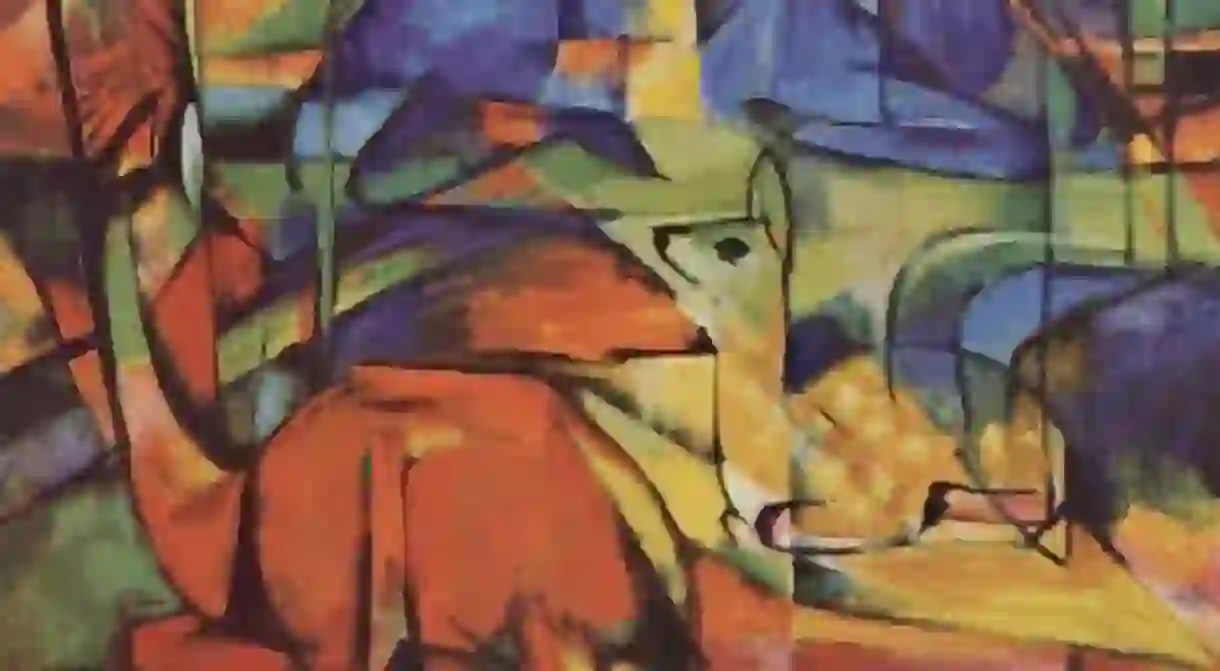A Guide To German Expressionism

The Expressionist movement emerged at the beginning of the 20th century, and aimed to represent subjective emotions — often by using distorted colours and a sense of perspective — in contrast to impressionist painters who intended to reproduce nature in their work. It was a response against the traditional, state-sanctioned art popular at the time. Expressionism is mostly associated with Germany, but the style did not develop as a whole; it evolved with the formation of many different individual movements.
The Forerunners
They might not necessarily be German, but many avant-garde artists from the turn of the 20th century, such as Edvard Munch or Vincent van Gogh, have inspired the next generation to create art out of their comfort zone, changing the face of contemporary art. There is no idea of harmony in expressionist painting, its goal was to trigger emotions by exaggeration and primitivism. Edvard Munch’s shocking The Scream from 1893 is one of the most prominent examples of this idea. Munch reflects his own anxiety and emotions into his work, mainly by using strong colours and a contrast of linear perspective against the flowing curves of nature. The painting is today considered to be the Mona Lisa of modern times, and at the time reacted against the Impressionist movement and academic art. The Scream dates to the beginning of the Expressionist movement that spread throughout Europe from 1905 until the 1920s.

Die Brücke (The Bridge)
This movement was formed in 1905 in Dresden, and its members included artists such as Ernst-Ludwig Kirchner, Karl Schmidt-Rotluff and Emil Nolde. Its establishment is often considered to be the birth of Expressionism. This idea is represented in the name of the group: the bridge is a metaphor for crossing over to a new future. All of the members had a great interest in primitive art and expressing strong emotion, and mainly worked in woodcut, which creates an even more crude effect. They were highly inspired by German medieval artists such as Matthias Grünewald, Albrecht Dürer and Lucas Cranach, but also responded to avant-garde artists such as Munch. Their paintings included a wide form of imagery — from nudes in the studio, to landscape paintings and urban scenes. Working together until 1913, the artists then went their separate ways. Die Brücke is often compared with Fauvism, which it said to be the counterpart movement in France in the beginning of the 20th century. Even though both movements were interested in primitivism and the depiction of extreme emotion, Die Brücke works were more sexually charged and were considered to be more provocative.

Der Blaue Reiter (The Blue Rider)
Formed in 1911 in Munich, the group was lead by Franz Marc and Wassily Kandinsky. Both artists previously were part of the New Artist Association, but broke with the movement in 1911 in order to move forward a new form of abstraction. These two leading artists, alongside other members such as August Macke and Alexej Jawlenksy, were especially interested in spiritual forms in response to a more material modernising world. The blue rider was a reoccurring motive in Kandinsky’s work, expressing the movement beyond realistic expression. Franz Marc on the other hand often represented the horse in his work, and by their shared enthusiasm for this symbolic representation it became the icon of the group. With the outbreak of the First World War, the movement was dissolved in 1914. Kandinsky had to leave the country due to his Russian citizenship, and members such as August Macke and Franz Marc were killed in battle.

Die Neue Sachlichkeit (New Objectivity)
Neue Sachlichkeit was rather a style than a movement of artists working together. It emerged in the 1920s after the First World War and as its title proposes, artists wanted a return to reality in an unsentimental and objective manner. The two key artists associated with this shift are Otto Dix and George Grosz. Their paintings often criticised the governing of the Weimar Republic until 1933, as well as the development of German society after the loss of the war.
Another artist connected with Neue Sachlichkeit is Max Beckmann, even though he rejected the Expressionist movement and what is represented. After living through traumatic experiences during the First World War, Beckmann shows strong emotionalism in his work, processing his changed opinion of humanity through distortion and figurative painting. In the late 1930s, his work was labelled as ‘Degenerate’ by the Nazis.














